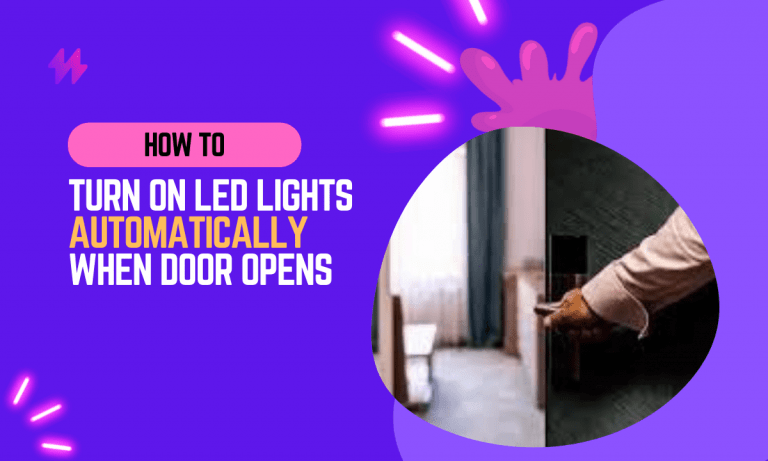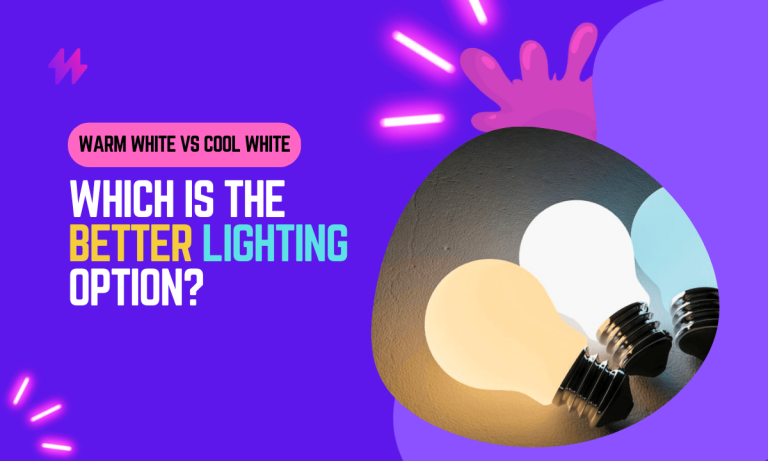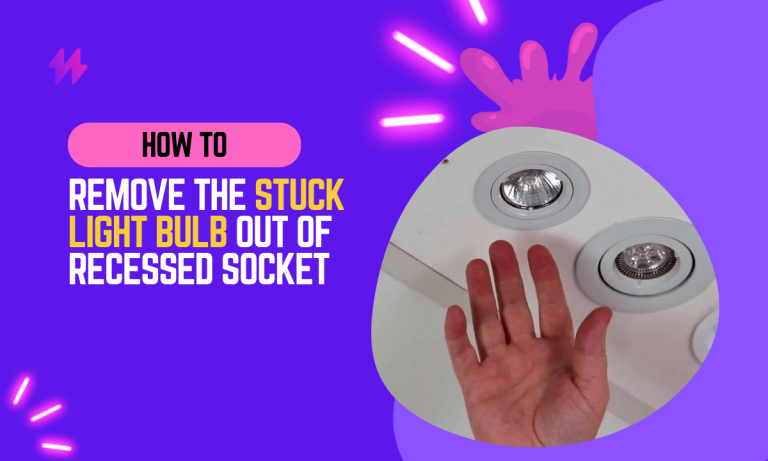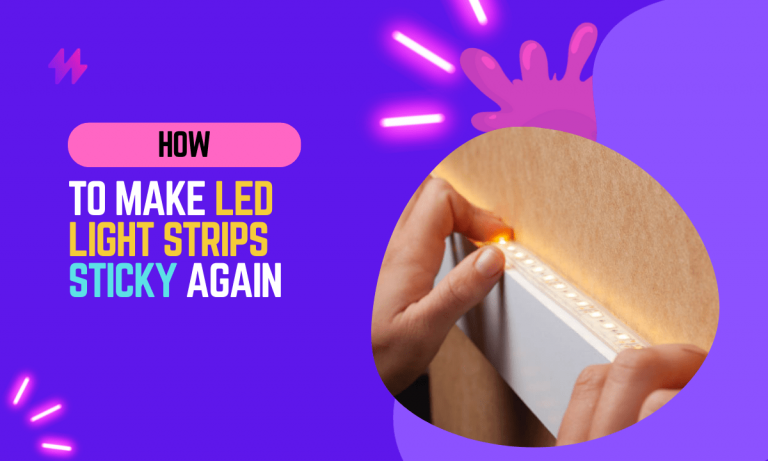Why Are My Dimmable LED Lights Flashing?
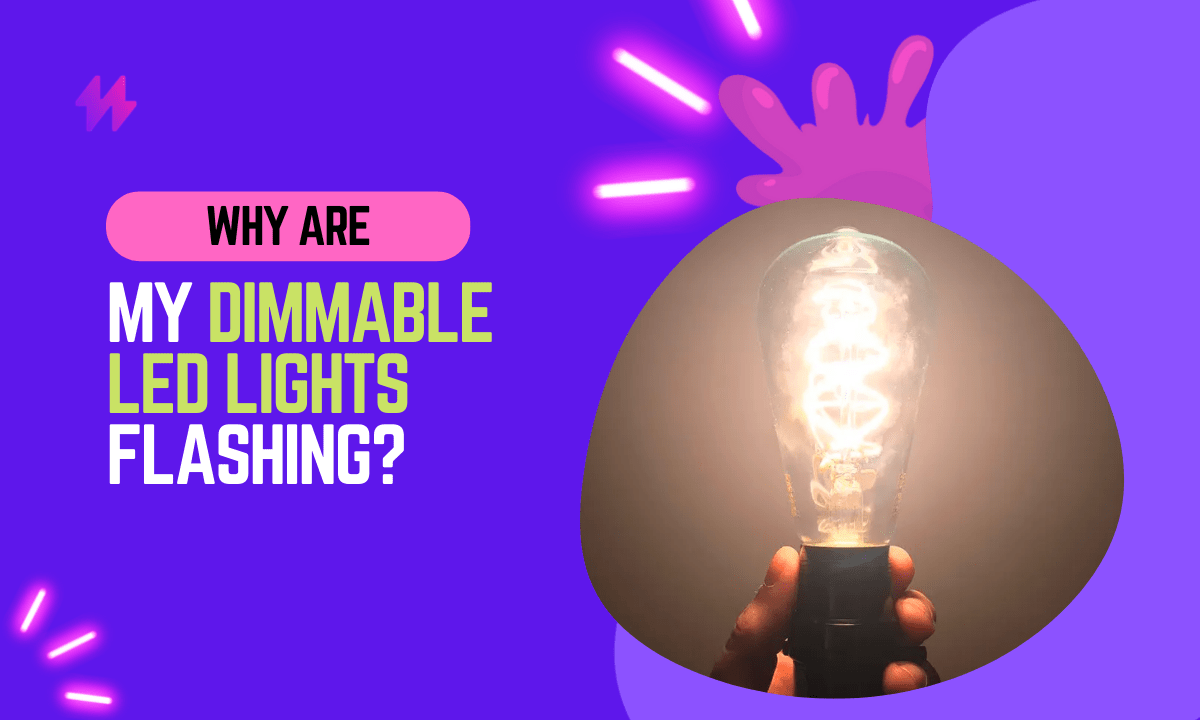
Have you ever noticed your dimmable LED lights flashing and flickering, disrupting the ambiance and mood you were trying to create in your home? It’s not only frustrating, but it can also be harmful to your health if it persists.
In this blog, we’ll delve into the causes of this annoying problem and offer some solutions to help you fix it. Don’t let flickering LED lights ruin your relaxation time at home – keep reading to learn how to prevent them from flashing.
It’s essential to understand that the flickering of dimmable lights can often be attributed to an unsuitable dimmer module or incompatibility between the light fixture and the bulbs used. Seeking help from a lighting specialist can assist you in choosing the appropriate dimmer switches to ensure smooth dimming and prevent flickering issues with your LED strip lights, LED lamps, and downlights in your home.
Understanding Why Are My Dimmable LED Lights Flashing: Causes of LED Lighting Issues | LED Dimming Solutions

There are several reasons why dimmable LED lights may flash, including the following:
There are several reasons why dimmable LED lights may flash, including the following: When the flickering occurs, it’s often due to an incompatibility between the LED dimmers and the lighting fixtures installed in your space. Understanding how various factors like bulb types and electrical system compatibility affect LED lighting can help address why are my dimmable LED lights flashing effectively.
Resolving Incorrect Dimmer Switch Issues: Causes and Solutions for Dimmable LED Lights
One of the most common reasons for dimmable LED lights to flash is the use of an incorrect dimmer switch. Dimmable LED lights require a specific type of dimmer switch, which is compatible with LED technology. If the wrong type of dimmer switch is used, it can cause the LED lights to flash. To avoid this problem, it’s important to choose a dimmer switch that is specifically designed for use with LED lights.
To ensure optimal performance and avoid issues such as flickering lights, using higher-quality dimmer switches is crucial for dimmable lighting products. If you experience problems with your light bulbs, consider whether your current dimmer switch is compatible with the LED lighting circuit in your home.
Understanding Electrical Interference in Dimmable LED Lights: Causes and Solutions
Another potential cause of dimmable LED lights flashing is electrical interference. LED lights are sensitive to electrical interference, which can cause them to flicker or flash. To reduce electrical interference, keep electronic devices away from the LED lights and use shielded cables to connect the LED lights to the dimmer switch.
Finding the right dimmable bulbs for your space is crucial to ensure they function properly without issues such as flicker. Utilizing quality LED dimmer switches can help create a reliable light source that enhances your lighting controls and prevents problems like LED lights flickering or the need for frequent replacements.
Troubleshooting Power Supply Issues in Dimmable LED Lights: A Complete Guide
Dimmable LED lights require a stable and consistent power supply in order to function properly. If the power supply is unstable or inconsistent, it can cause the LED lights to flash. To avoid this problem, it’s important to check the power supply and ensure that it is stable and consistent.
To maintain the quality of your dimmable lights, it’s crucial to use proper wiring and ensure all connections are secure to prevent electrical issues that could lead to light flickering. Additionally, consider investing in modern dimmer switches designed to work seamlessly with LED light sources to enhance your lighting experience and eliminate potential dimming problems.
Dimmer Switch Compatibility: Understanding Its Importance in Preventing Flashing Dimmable LED Lights
Dimmable LED lights are not compatible with all types of dimmer switches. In some cases, the LED lights and the dimmer switch may not be compatible, which can cause the LED lights to flash. To avoid this problem, it’s important to check the compatibility of the LED lights and the dimmer switch before installation.
Also read: How to avoid color temperature inconsistencies
To ensure smooth operation of your dimmable lights, it is important to choose modern dimmer switches that are specifically designed for compatibility with LED light bulbs. Furthermore, performing regular checks on the electrical connections and ensuring the use of quality dimmers can significantly reduce instances of light flickers caused by an unsuitable dimmer module.
Importance of Correcting Flashing Dimmable LED Lights: Key Reasons and Solutions

Below are the 5 reasons why it’s important to correct the flashing of dimmable LED lights.
Correcting the flashing of dimmable LED lights is critical for maintaining a comfortable and enjoyable lighting experience in your home. Adjusting the compatibility of dimmer light technology and ensuring that you are using contemporary dimmer switches can significantly reduce issues like led flash or light bulb flicker.
- Flashing dimmable LED lights can be annoying and disrupt the ambiance and mood in your home
- Flickering lights can cause headaches, eye strain, and even migraines in some individuals
- Constant exposure to flashing lights can lead to decreased productivity and difficulty concentrating
- Ignoring the issue of flashing LED lights can result in larger, more costly repairs to your lighting system in the future
- Correcting flickering LED lights is important for your comfort, health, and the overall health of your lighting system.
How to Stop Dimmable LED Lights from Flashing: Essential Tips for a Flicker-Free Experience
If your dimmable LED lights are flashing, there are a few steps you can take to stop the LED lights from flickering, and flashing and ensure that your LED lights function properly:
If your dimmable LED lights are flashing, there are a few steps you can take to stop the LED lights from flickering, and flashing and ensure that your LED lights function properly: First, consider replacing your outdated dimmer switches with new dimmer switch models specifically designed for modern lamps to enhance compatibility with your current light fixtures. This upgrade can significantly minimize dimming problems caused by unreliable dimmer switch technology and ensure that your dimmable lights function without issues like flickering or signal interruptions.
Select the Right Dimmer Switch for Your Dimmable LED Lights
The first step to stop dimmable LED lights from flashing is to choose the correct dimmer switch. As mentioned above, dimmable LED lights require a specific type of dimmer switch that is compatible with LED technology. To avoid flashing, it’s important to choose a dimmer switch that is specifically designed for use with LED lights.
To ensure the smooth operation of dimmable lights in your home, it’s advisable to implement modern dimming technology that minimizes the likelihood of flickering. Utilizing high-quality light dimmers can be a game-changer, as they address compatibility issues with both recessed lights and older incandescent lighting fixtures.
Minimizing Electrical Interference: Effective Strategies for Dimmable LED Lights
Electrical interference can cause dimmable LED lights to flash. To reduce electrical interference, keep electronic devices away from the LED lights and use shielded cables to connect the LED lights to the dimmer switch.
To effectively prevent issues like flickering with your dimmable lights, it’s essential to investigate the root cause, which may include factors such as faulty wiring or incompatible dimmer models. Ensuring that you have the right lighting controls and suitable dimmer switches can significantly improve your overall dimming experience and reduce the likelihood of bulbs flickering or flashing when used with modern lamps.
Understanding the Importance of Checking the Power Supply for Dimmable LED Lights: Causes and Solutions
Another potential cause of dimmable LED lights flashing is a faulty or inconsistent power supply. To stop dimmable LED lights from flashing, it’s important to check the power supply and ensure that it is stable and consistent. If necessary, replace the power supply or use a power conditioner to regulate the power supply.
It’s important to recognize that outdated dimmer switches can lead to flickering issues in dimmable lights, chiefly due to their inability to support modern LED dimming technology. Upgrading to newer dimmer switch models can drastically improve your overall lighting experience by reducing LED dimming problems and enhancing compatibility with various light fixtures.
Ensuring Compatibility: A Key to Preventing Dimmable LED Lights from Flashing
As mentioned above, dimmable LED lights are not always compatible with all types of dimmer switches. To ensure that your dimmable LED lights and dimmer switch are compatible, it’s important to check the compatibility of the two before installation. If necessary, you can consult the manufacturer’s instructions or contact the manufacturer for assistance.
Must read: Why LED Lights Consume Less Power?
To avoid issues with flickering dimmable lights, it is crucial to select a new dimmer switch that matches the specifications of modern LED drivers. Additionally, ensuring that your lighting controls are designed for compatibility with your LED fixtures can prevent potential electrical hazards associated with old dimmers and help maintain a constant light output.
Final Thoughts on Resolving Dimmable LED Lights Flashing Issues
In conclusion, the issue of flashing in dimmable LED lights is a common concern that stems from several technical discrepancies within the lighting system, primarily involving compatibility and power supply. Dimmable LEDs require compatible dimmer switches that are specifically designed to handle the low power requirements of LED technology. Traditional dimmers, typically designed for higher wattage incandescent bulbs, often fail to provide a stable current to LED lights, leading to irregular flashing. This is because LED bulbs operate with a much lower wattage and can be sensitive to minute fluctuations in voltage supplied by the dimmer. Ensuring that both the dimmer and the LED lights are mutually compatible is crucial for preventing flashing and ensuring smooth operation.
Furthermore, the quality of the LED driver within the bulb also plays a significant role in preventing unwanted flashing. The driver regulates the power to the LED, and if it’s not functioning correctly, it can cause intermittent flashing, especially when dimmed. Using high-quality LED bulbs with robust, well-designed drivers can mitigate this risk. Additionally, for installations where multiple LEDs are used, ensuring that the total load is within the capacity of the dimmer can prevent overloading, which often results in flashing. If troubleshooting these factors doesn’t resolve the flashing, it may be beneficial to consult with a professional electrician to assess the electrical installation and potentially upgrade the wiring or dimmer switches. By addressing these issues, homeowners can enjoy the energy efficiency and longevity of LED lighting without the annoyance of flashing, ultimately enhancing the comfort and ambiance of their living spaces.
Why Are My Dimmable LED Lights Flashing | Common Issues Leading to Flashing Dimmable LED Lights
Dimming lights can exhibit flickering for various reasons, leading to the question of why are my dimmable LED lights flashing. One likely cause of flickering is the use of incompatible bulbs, such as non-dimmable products or cheap dimmers that are not suited for dimmable alternatives. The lighting industry has seen a shift from traditional lights, like halogen lights and incandescent lighting products, to LED technologies. Yet, compatibility issues can arise, especially with older dimmer switches that lack an appropriate dimmer module. This can create defects in the dimming system, resulting in intermittent flickering or unreliable dimmer switch performance. Voltage fluctuations can also disrupt the signal sent to the lamp, especially if the dimming feature is combined with high-voltage/wattage appliances. Ensuring proper connection and compatibility between the bulbs and light sockets is key to achieving a dimmed effect without unwanted flicker.
Why Are My Dimmable LED Lights Flashing | Flickering Due to Incompatible Bulbs
Flashing dimmable LED lights often stem from incompatible bulbs. Dimmable lights can flicker if the dimmer switch has an unsuitable dimmer module, which frequently happens with traditional dimmer switches designed for halogen lights or non-dimmable bulbs. Philips Hue systems and other smart lighting solutions may also face compatibility issues, particularly when paired with old lighting setups or a newly-installed bulb that doesn’t meet the specific requirements. The likelihood of flickering increases with a defective connection between the lamp and controls, especially if the bulb is loosely fitting.
Many bulbs exhibit flickering due to electrical problems stemming from voltage fluctuations. For instance, direct power issues can lead to dimmer flickering, especially if using low wattages. If a transformer power supply is incompatible or the wrong type of constant voltage driver is employed, this may cause excessive wattage that impacts the dimming success. Addressing the compatibility of downlight fixtures and checking for signal filters in wireless lighting controls can help mitigate these flickering issues. Understanding these factors contributes to resolving common LED-related questions about why are my dimmable LED lights flashing.
Influence of Voltage Fluctuations on LED Performance
Voltage fluctuations significantly affect the performance of dimmable LED lights. These variations often lead to issues such as flickering or unexpected brightness changes. A likely cause of flickering could stem from the use of a non-dimmable driver that fails to accommodate the dimmable ones effectively. This situation can become pronounced with newly-installed bulbs or if there’s bulb movement in fixtures. The signals sent through adaptive dimming systems may struggle to keep up, especially if there are downlight compatibility issues.
Low-wattage solar lights or halogen lights may also exhibit similar problems when integrated into a shared electrical circuit. If an electrical panel replacement has recently been performed, it might not be calibrated to handle the demands of various lighting types. Understanding the dimming equation becomes critical for troubleshooting. Loosely-fitting bulbs can exacerbate the flickering issue, leaving homeowners to ponder, “Why Are My Dimmable LED Lights Flashing?” A single light bulb may not show these symptoms, but the cumulative effect in a multi-bulb setup can alter the entire lighting world experience.
Best Practices for Maintaining Dimmable LED Lights
Maintaining optimal performance for dimmable LED lights requires attention to several key factors. One common reason for the issue of “Why Are My Dimmable LED Lights Flashing” is using incompatible bulbs, such as halogen lights, which can lead to unwanted dimmer flickering. It’s essential to ensure that LED bulbs are specifically designed for use with dimmer switches to avoid these problems. Regularly testing the functionality of the dimmer switch can help identify any issues early on. Quality LED bulbs, as recommended by the lamp manufacturer, should be chosen to provide a stable light experience. Additionally, understanding the effects of width modulation can also assist in preventing fluctuations. Addressing these factors will help minimize the likelihood of flickering in your lighting setup.
Regularly Testing Dimmer Switch Functionality
Testing the functionality of dimmer switches is essential for preventing issues with LED lighting. Common problems like led dimmer flickering can often be traced back to faulty or incompatible dimmer switches. If the dimmer switch is not designed to work with LED technology, it can lead to unexpected behavior such as flashing lights. This situation prompts homeowners to wonder why their dimmable LED lights are flashing, especially when they have previously replaced halogen lights with LED options.
Regular testing can reveal the likelihood of malfunction in dimmer switches. If flickering occurs, it is important to consider whether the dimmer is compatible with the specific LED light replacements in use. Issues may arise from older dimmers that were not engineered to handle the lower wattage of LEDs. A flashlight can be handy for inspecting the dimmer switch and its connections while checking for any signs of wear or damage. Understanding these elements can help address the likely cause of flickering and improve overall lighting performance.
Choosing Quality LED Bulbs for Optimal Performance
Selecting quality LED bulbs is crucial for preventing issues like flickering. Poor-quality bulbs often struggle to regulate the voltage they receive, leading to instability. This instability is often a likely cause of flickering, prompting homeowners to ask, “Why Are My Dimmable LED Lights Flashing?” High-quality options typically feature better internal circuitry, which allows them to manage dimming and varying voltage more effectively. Upgrading from halogen lights to reliable LED bulbs can significantly reduce the chances of experiencing flashing lights.
Compatibility with existing dimmer switches also plays a vital role in performance. Not all dimmers are designed to work with LED technology, which can result in flickering when incompatible bulbs are used. Choosing high-quality LED bulbs that are labeled as dimmable helps ensure smooth operation. Such bulbs can act as a reliable light replaces for older incandescent or halogen fixtures while minimizing the frustration of inconsistent lighting. Understanding the nuances of bulb quality and compatibility is key to resolving the question, “Why Are My Dimmable LED Lights Flashing?”

